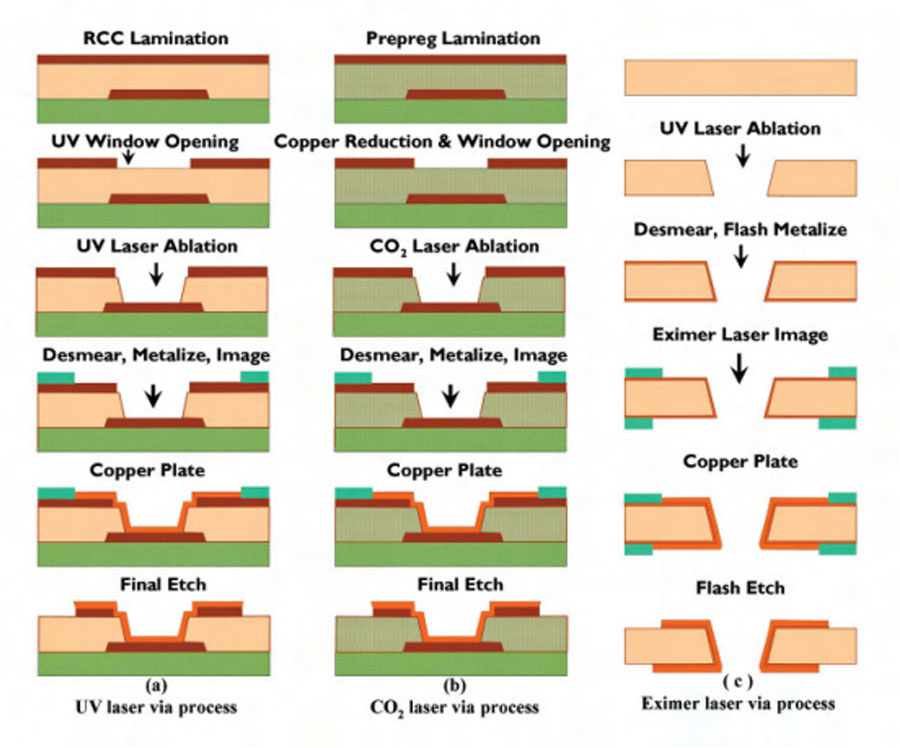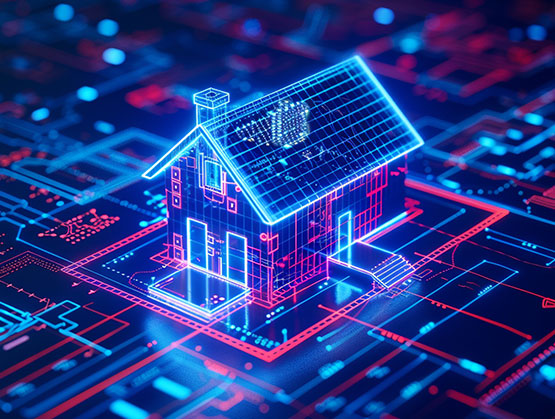Laser via processing is by far the most popular microvia hole formation process. But it is not the fastest via formation process.In Figure 1, the chemical etching of small vias is the fastest, with an estimated rate of 8,000 to 12,000 vias per second. This is also true of plasma via formation and photovia formation. These are all mass-via-formation processes. Laser drilling is one of the oldest microvia generation techniques.The wavelengths for laser energy are in the infrared and ultraviolet region. Laser drilling requires programming the beam fluence size and energy. High-fluence beams can cut metal and glass, whereas low-fluence beams cleanly remove organics but leave metals undamaged. A beam spot size as small as approximately 20 microns (<1 mil) is used for high- fluence beams and about 100 microns (4 mils) to 350 microns (14 mils) for low-fluence beams.
The laser is the most common method of production of microvias to be plated or filled with a conductive paste. Lasers are capable of ablating dielectric material and stopping when intercepting the copper circuitry, so they are ideally suited for creation of depth-controlled blind vias. Figure 1 shows these three major laser processes.

FIGURE 1: Laser generated via process employ (a) UV, (b) CO2,and (c) eximer methods
Most laser processes utilize either CO2 or UV lasers since they are the most readily available and economical lasers. When using a CO2 laser to produce vias in epoxy laminates, the copper must be removed above the area to be ablated. The CO2 laser is primarily used for laminates not supported by glass. This includes unsupported laminates such as flexible polyimide and resin-coated copper (RCC) foil and laminates reinforced with alternative materials such as aramid fibers. The modified TEA CO2 (Transversely Excited Atmospheric) lasers are specifically created to laze through glass fibers using 9,000 nm wavelength and higher peak power.
However, there are many variations. For the purpose of drilling microvia holes, there are five laser systems: UV/Eximer, UV/Yag laser, CO2 laser, Yag/ CO2, and CO2/ TCO2 combinations. There are also many dielectric materials: RCC, resin only (dry film or liquid resin), and reinforced prepreg. Therefore, the number of ways to make microvia holes by laser systems is driven by the permutation of five laser systems and these dielectric materials.
Higher power lasers (i.e. Ultra Violet-UV) can remove glass and copper and can therefore be used with conventional laminates, but are typically slower when going through copper and glass fibers. There are several factors to consider in laser via processing: position accuracy of lased holes (microvia holes), uneven diameters of holes, dimensional change of the panel after curing dielectric, dimensional change of the panel due to temperature and humidity variations, alignment accuracy of the photo-exposure machine, unstable nature of negative artwork, and so on. These should be carefully monitored and are important for all microvia hole processes.

Contact: Wing
Phone: +852 21386086
E-mail: sales@fwpcb.com
Whatsapp:+86 199 2764 2527
Add: Unit 3, 6/F., Kam Hon Industrial Building,8 Wang Kwun Road, Kowloon Bay, Hong Kong
We chat
